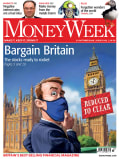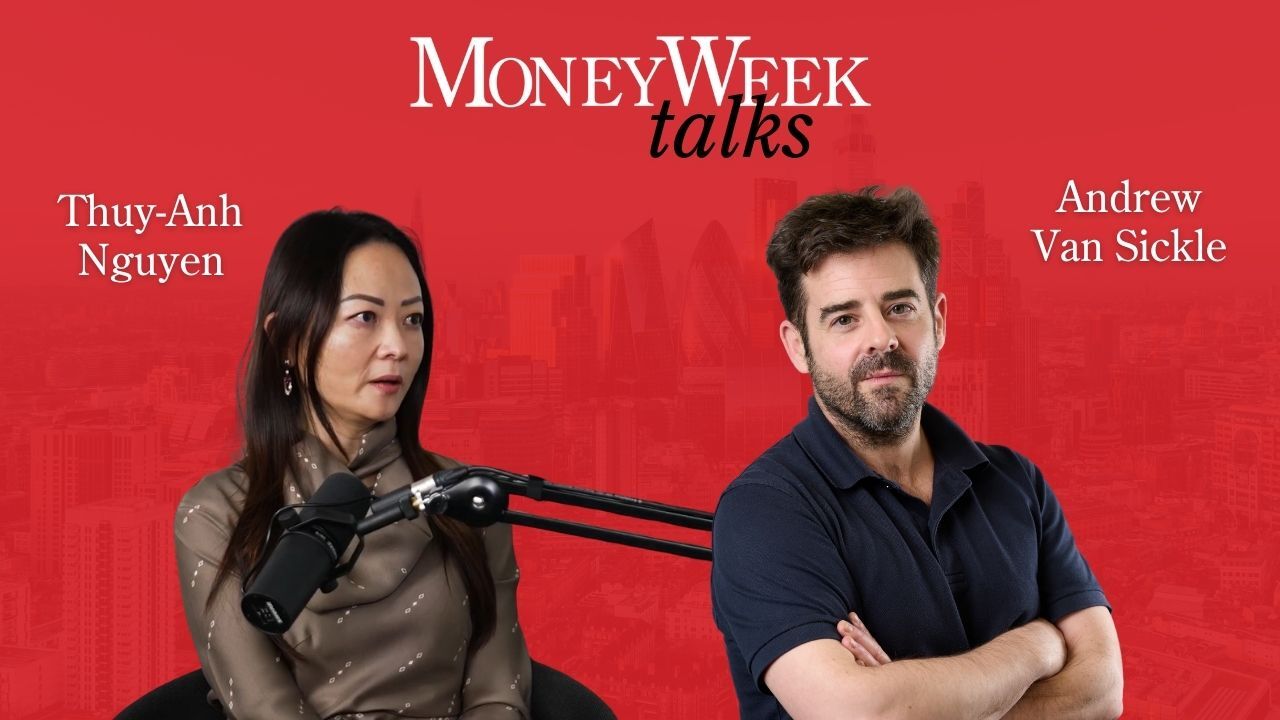Has the gold price bottomed out?
After topping out at over $1,900 an ounce, the price of gold tumbled to around $1,500. But now it looks to be rising again. Matthew Partridge looks at what's in store for gold.

We've been fans of gold since its bull market began in 2001. Since then it has risen more than sevenfold, from $250 an ounce to near enough $2,000 last summer.
But since peaking at around $1,900 in late August, early September last year, the gold price has slid sharply. At one point in December, it fell below $1,500. Now it's sitting just above $1,600, close to where it was at the start of 2012.
Our own Dominic Frisby has said that he reckons gold is now in one of its consolidation periods. And it seems that Marc Faber agrees with him.
MoneyWeek
Subscribe to MoneyWeek today and get your first six magazine issues absolutely FREE

Sign up to Money Morning
Don't miss the latest investment and personal finances news, market analysis, plus money-saving tips with our free twice-daily newsletter
Don't miss the latest investment and personal finances news, market analysis, plus money-saving tips with our free twice-daily newsletter
Faber - as regular readers will probably know is the author of the Gloom, Boom and Doom Report newsletter and has a strong forecasting track record. As well as predicting the boom in gold and commodities, he was one of the first to forecast that the US government would end up bailing out the banking system. And while he's often described as an uber-bear, he in fact called the 2009 turn in the stock market correctly too.
So what does he think of gold just now? He hasn't predicted how high it will go and is unsure of whether it will hit a fresh high in the short run. However, in a recent TV interview, he said he believes that gold has now bottomed out, and won't fall any further. And at the most recent roundtable in US financial newspaper Barron's, he says that now might be a good time to get back into gold shares.
Central bankers think money printing is the only solution
What's his reasoning? Faber reckons that government bonds offer awful value. ten-year US Treasuries yield a measly 1.6%, and other safe' developed world sovereign bonds are similar. At the same time, he is concerned about central bankers' fondness for quantitative easing (QE) as a sticking plaster for all our economic ills.
More QE would mean more damage to the value of paper currencies in general. By contrast, the supply of gold is relatively fixed, meaning it is likely to go up as more money is printed. As Faber puts it: "I think that in the current environment where it is clear that the worse the economy becomes the more money printers will be at work, that to own a currency whose supply can not be increased at the will of some clowns who occupy the central banks, is a desirable investment".
So while he is bearish on shares in general, he likes shares in gold mining companies a lot. Many, he says, are "very inexpensive" given the value of their reserves. One he particularly likes is Goldcorp (NYSE: GG). As he tells Barron's, there's no real political risk with the stock - "most of its properties are in the US, Canada and Mexico. The company isn't exposed to regimes that are talking about nationalising resources".
We suspect Faber's not wrong. While Ben Bernanke hasn't been dropping any hints about more QE recently, if the markets tank or jobs growth gets even worse, he's likely to have all the excuses he needs. Meanwhile, over here, the debate within the Bank of England seems to be moving towards more QE too.
And with the Spanish bail-out falling flat on its face Spanish bond yields have now risen above the 7% mark widely seen as 'the point of no return' even Europe may feel forced to act soon. Alexis Tsipras, who has a strong chance of becoming the next Greek president, has all but said Greece will walk if it does not get a similar deal to Spain's. With Germany unwilling to budge further, at least for the moment, it looks very possible that the euro could lose at least one of its members, which would more than likely be the catalyst for more aggressive monetary measures if not from Europe, then certainly from the US.
Even central banks themselves seem to be aware of this. The World Gold Council believes that central banks have greatly increased their purchases of gold over the last year. Given that they have been net sellers until very recently, this should push prices higher.
Faber's tip, Goldcorp, looks reasonable to us. It's on a forward price/earnings ratio of 12.5, and as the company points out itself, since 2008, earnings per share have nearly quadrupled, and reserves per share have gone up by 23%. Yet the share price is still $40, compared with $49 in July 2008.
However, if you'd prefer to spread your risk, you could buy an exchange-traded fund (ETF) that tracks the gold sector. ETF specialist Paul Amery looks at three London-listed ETFs that do the job in this week's issue of MoneyWeek magazine, out tomorrow. If you're not already a subscriber, subscribe to MoneyWeek magazine.
Get the latest financial news, insights and expert analysis from our award-winning MoneyWeek team, to help you understand what really matters when it comes to your finances.

-
 The best real estate opportunities to invest in for 2026
The best real estate opportunities to invest in for 2026House price growth may be slowing but offices and online shopping are driving growth in real estate investment
-
 Asia's new tiger economy: MoneyWeek Talks
Asia's new tiger economy: MoneyWeek TalksPodcast MoneyWeek's editor, Andrew van Sickle, speaks to Dragon Capital's Thuy-Anh Nguyen about Vietnam's remarkable rise